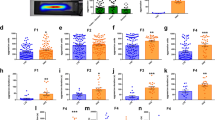Abstract
The zebra fish has been a preferred subject of genetic analysis. It produces a large number of offspring that can be kept in small aquaria, it can be easily mutagenized using chemical mutagens (e.g., ethyl nitrosourea [ENU]), and high-resolution genetic maps exist that aid identification of novel genes. Libraries containing large numbers of mutant fish have been generated, and the genetic mechanisms of the development of zebra fish, whose embryo is transparent, have been extensively studied. Given the extensive homology of its genome with that of other vertebrate species including our own and given the available genetic tools, zebra fish has become a popular model organism. Despite this popularity, however, surprisingly little is known about its behavior. It is argued that behavioral analysis is a powerful tool with which the function of the brain may be studied, and the zebra fish will represent an excellent subject of such analysis. The present paper is a proof of concept study that uses pharmacological manipulation (exposure to alcohol) to show that the zebra fish is amenable to the behavioral genetic analysis of aggression and thus may allow us to reveal molecular mechanisms of this behavioral phenomenon relevant to vertebrates.
Similar content being viewed by others
References
Barber, I., Huntingford, F. A., and Cropton, D. W. T. (1995). The effect of hunger and cestode parasitism on the shoaling decisions of small freshwater fish. J. Fish Biol. 47:524-536.
Basquill, S. P., and Grant, J. W. A. (1998). An increase in habitat complexity reduces aggression and monopolization of food by zebra fish (Danio rerio). Can. J. Zool. 76:770-772.
Bloom, H. D., and Perlmutter, A. (1977). A sexual aggregating pheromone system in the zebrafish, Brachydanio rerio. J. Exp. Zool. 199:215-226.
Breder, C. M. Jr., and Halpern, F. (1946). Innate and acquired behavior affecting the aggregation of fishes. Physiol. Zool. 19154-19190. Author please supply missing information.
Bronstein, P. M. (1984). Agonistic and reproductive interactions in Betta splendens. J. Comp. Psychol. 98:421-431.
Cerda, J., Conrad, M., Markl, J., Brand, M., and Herrmann, H. (1998). Zebrafish vimentin: Molecular characterisation, assembly properties and developmental expression. Eur. J. Cell Biol. 77:175-187.
Currie, P. D. (1996). Zebrafish genetics: Mutant cornucopia. Curr. Biol. 6:1548-1552.
Detrich, W. H., Westerfield, M., and Zon, L. I. (Eds.) (1999). The zebrafish: Biology—Methods in cell biology (Vols. 59–60). San Diego: Academic Press.
Draski, L. J., and Deitrich, R. A. (1995). Initial effects of ethanol on the central nervous system. In R. A. Deitrich and V. G. Erwin (eds.), Pharmacological effects of ethanol on the nervous system (pp. 227-250). New York: CRC Press.
Eisen, J. S. (1996). Zebrafish make a big splash. Cell 87:969-977.
Gerlai, R. (2001). Behavioral tests of hippocampal function: Simple paradigms, complex problems. Behav. Brain Res. 125:269-277.
Gerlai, R., Lahav, M., Guo, S., and Rosenthal, A. (2000). Drinks like a fish: Zebra fish (Danio rerio) as a behavior genetic model to study alcohol effects. Pharmacol. Biochem. Behav. 67:773-782.
Goodwin, D. W., Dowd, C. P., and Guze, S. B. (1971). Biphasic and reversible adaptation of goldfish to alcohol. Nature 232:654-655.
Granato, M., and Nusslein-Volhard, C. (1996). Fishing for genes controlling development. Cur. Opin. Genet. Devel. 6:461-468.
Greizerstein, H. B. (1975). Effect of rate of absorption and dose on the development of tolerance to ethanol. Int. Union Pharmacol. Proceedings of the International Congress of Pharmacology (6th Abstract, p. 632). Helsinki, Oxford: Pergamon Press.
Grunwald, D. J. (1996). A fin-de-siècle achievement: Charting new waters in vertebrate biology. Science 274:1634-1635.
Grunwald, J. D., and Eisen, J. S. (2002). Timeline: Headwaters of the zebrafish—emergence of a new model vertebrate. Nat. Rev. Genet. 3:717-724.
Guo, S., Driever, W., and Rosenthal, A. (1999). Mutagenesis in zebra fish: Studying the brain dopamine systems. In W. E. Crusio and R. Gerlai (eds.), Handbook of Molecular-Genetic Techniques for Brain and Behavior Research (pp. 166-176). Amsterdam: Elsevier.
Holder, N., and McMahon, A. (1996). Genes from zebrafish screnes. Nature 384:515-516.
Kavaliers, M. (1989). Day-night rhythms of shoaling behavior in goldfish: Opioid and pineal involvement. Physiol. Behav. 46:167-172.
McCann, L. I., Koehn, D. J., and Kline, N. J. (1971). The effects of body size and body markings on nonpolarized schooling behavior of zebra fish (Brachydanio rerio). J. Psychol. 79:71-75.
McIlwain, K. L., Merriweather, M. Y., Yuva-Paylor, L. A., and Paylor, R. (2001). The use of behavioral test batteries: Effects of training history. Physiol. Behav. 73:705-717.
Peeke, H. V., Cutler, L., Ellman, G., Figler, M., Gordon, D., and Peeke, S. C. (1981). Effects of alcohol, congeners, and acetaldehyde on aggressive behavior of the convict cichlid. Psychopharmacology (Berl.) 75:245-247.
Ryback, R. S. (1970). The use of fish, especially goldfish, in alcohol research. Q. J. Stud. Alcohol. 31:162-166.
Ryback, R., Percarpio, B., and Vitale, J. (1969). Equilibration and metabolism of ethanol in the goldfish. Nature 222:1068-1070.
Walker, C., and Streisinger, G. (1993). Induction of mutations by gamma-rays in pregonial germ cells of zebrafish embryos. Genetics 103:125-136.
Westerfield, M. (2000). The zebrafish book: A guide for the laboratory use of zebrafish (Danio rerio) (4th ed.). Eugene, OR: University of Oregon Press.
Rights and permissions
About this article
Cite this article
Gerlai, R. Zebra Fish: An Uncharted Behavior Genetic Model. Behav Genet 33, 461–468 (2003). https://doi.org/10.1023/A:1025762314250
Issue Date:
DOI: https://doi.org/10.1023/A:1025762314250




